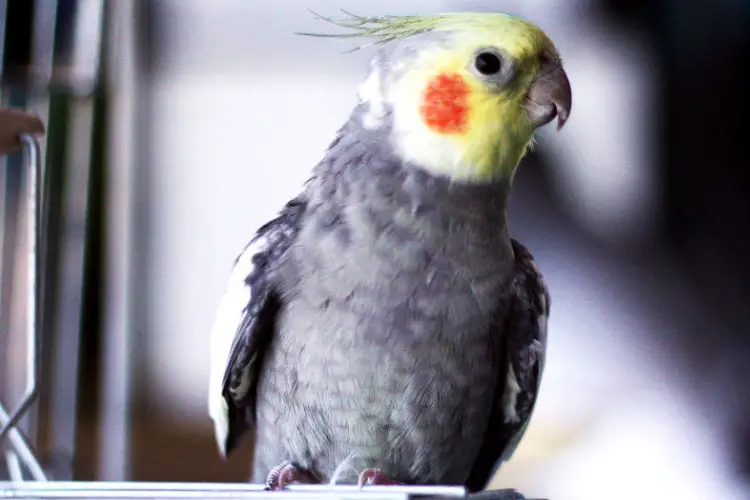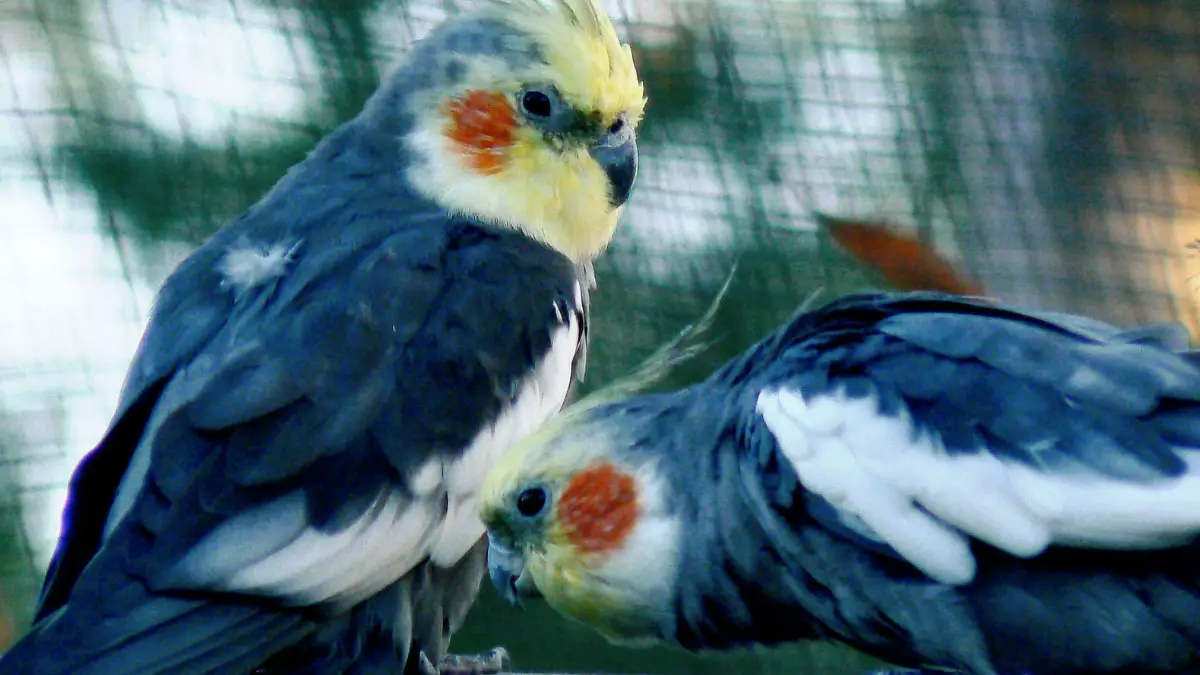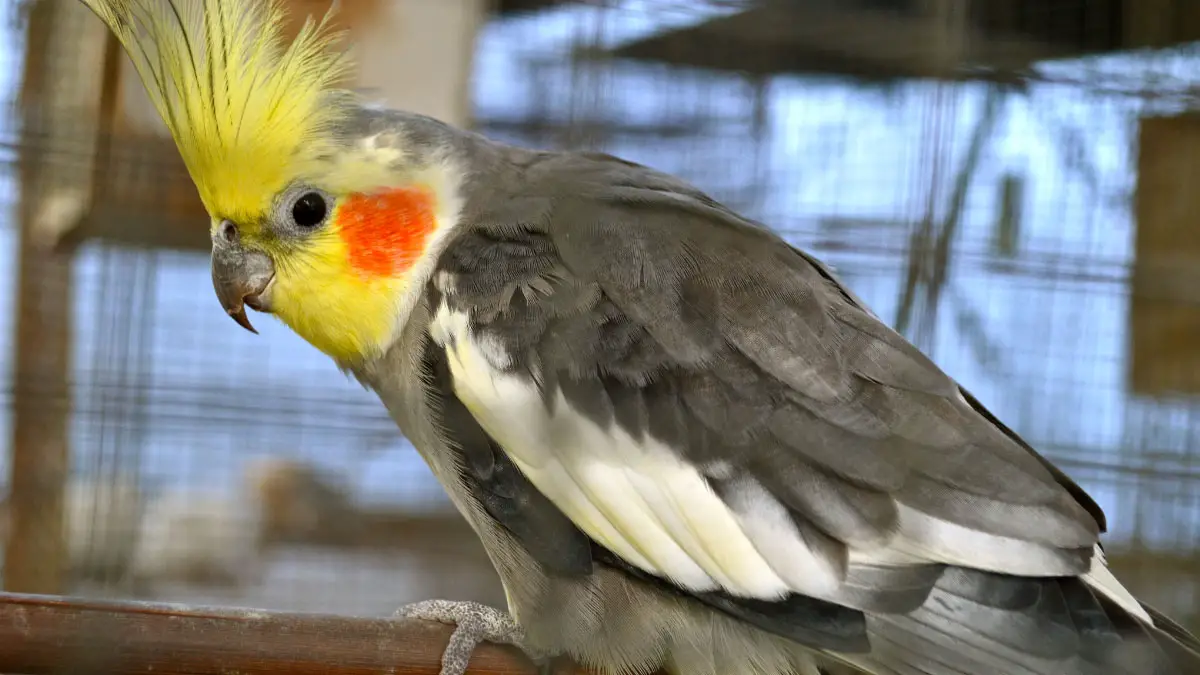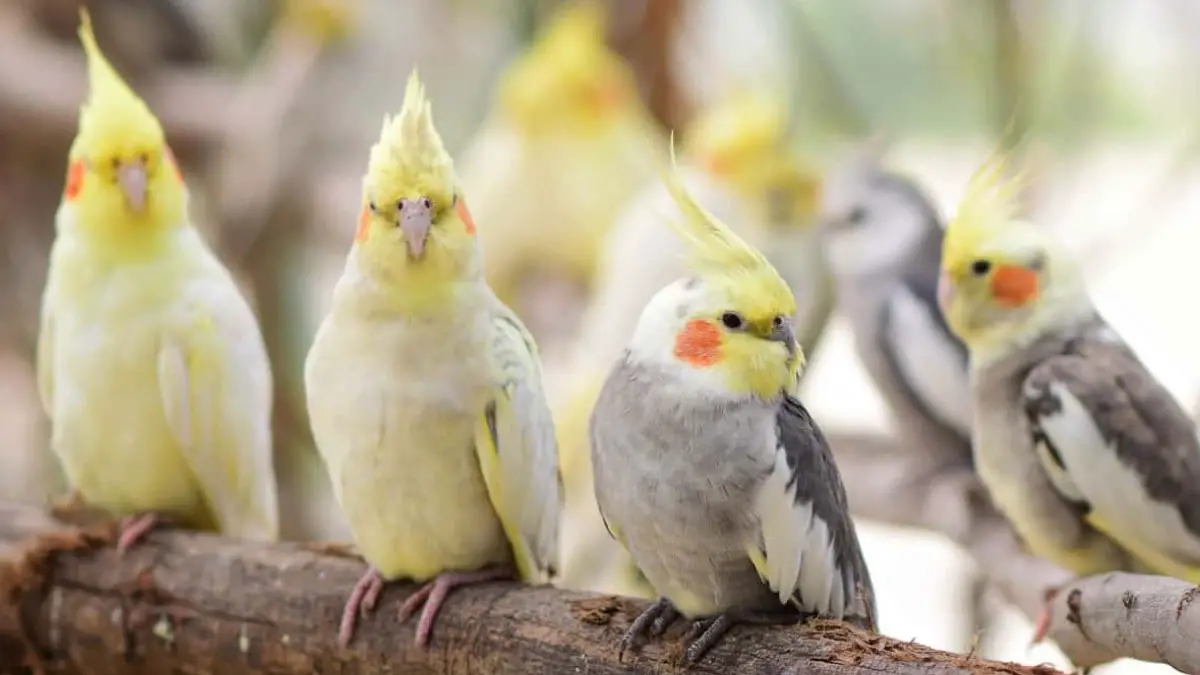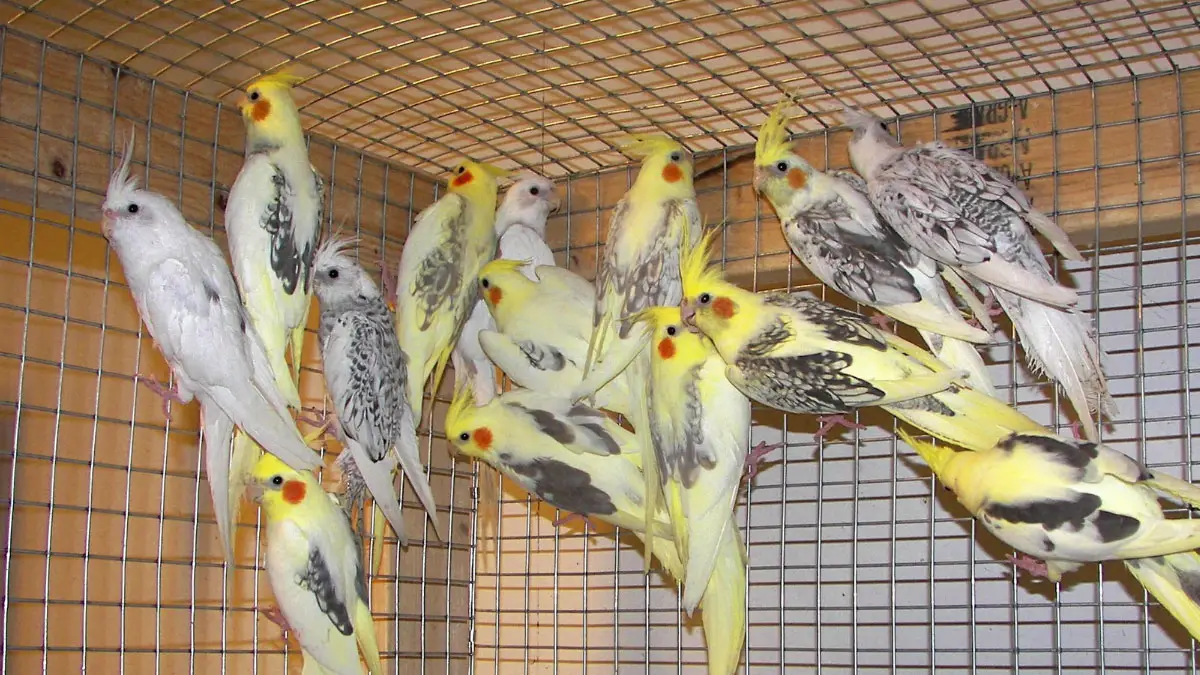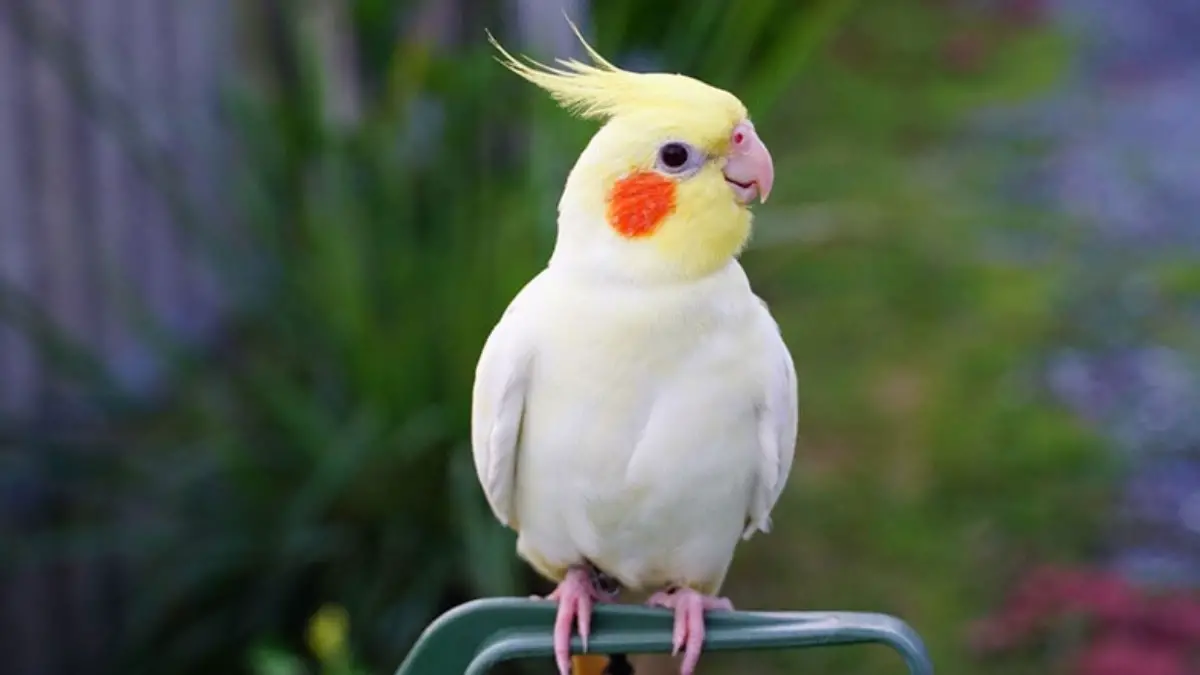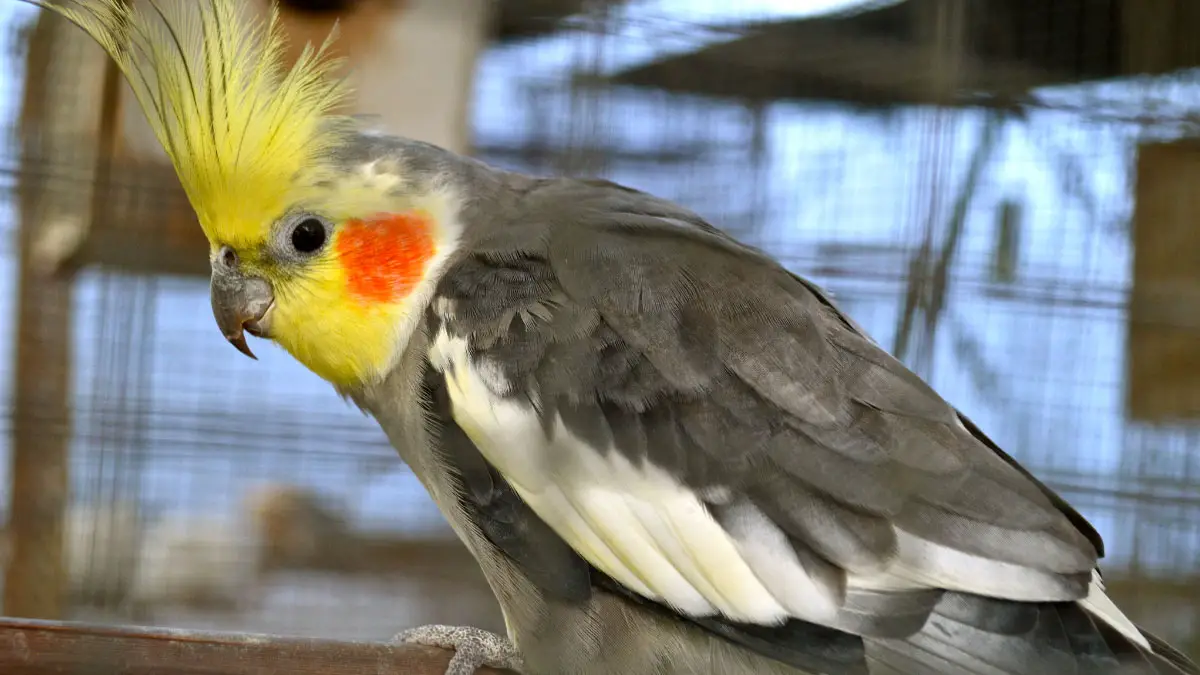Cockatiels, among other birds in the family Psittacidae, possess hooked beaks where the upper part is longer than the lower. These beaks are for smashing nuts and other foods they foliage in the wild. However, sometimes, you might notice your pet bird grinding its beak, but why does it do that?
So, why is my cockatiel grinding its beaks? Among the reasons your pet bird is grinding its beak is to calm and relax themselves. Unlike humans, grinding doesn’t mean stress to birds but shows comfort. However, the grinding should not be excessive, as it can cause beak damage.
In this article, you will learn about beak grinding behavior in cockatiels. You will also know the reasons why it happens and how to help them.
Why Is My Cockatiel Grinding Its Beak?
Most pet birds’ have or develop various behaviors that awe their owners. Some, like feather plucking, are more of a health concern, while others are just natural. Cockatiel beak grinding is normal behavior that can develop into a health problem if it becomes a habit.
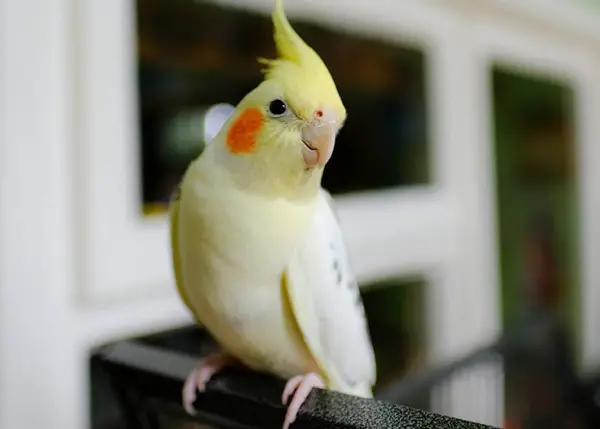
These sounds birds make are scrapping or crunching sounds which you can sometimes hear from the next room. The lower beak moves left to right while grinding under the upper and longer beak. The following are some reasons why cockatiels grind their beaks.
1. To Relax
It’s a normal and natural activity for cockatiels to grind their beaks just before sleeping. By then the birds should be perched on their roosting place, with their eyes closed. The relaxing grind mostly happens when the birds are resting but not when they’re actively playing.
2. To Exhibit Happiness
A happy cockatiel will also grind its beaks, sometimes accompanied by fluffed-up feathers. These feathered pets would also stand on one leg, a sign they’re cozy and happy. A happy grind also happens for some time then the bird stops.
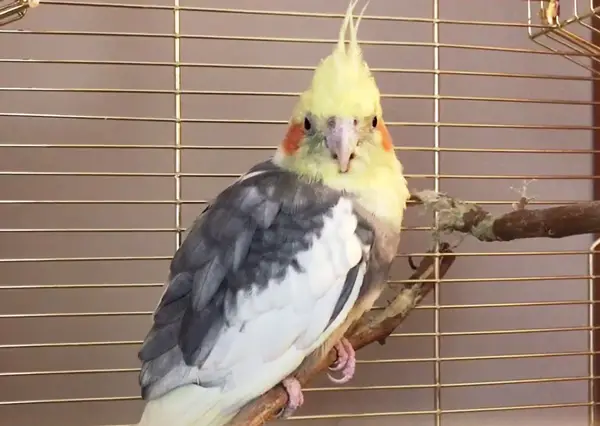
3. It Has Become a Habit
When grinding continues far longer than usual time, the cockatiel must have developed a habit. If the bird grinds at unusual times, like when it’s playing, it might also signify a habit. The grinding can lead to beak damage because of the repeated wear at the contact point.
4. When Sick
A bird suffering from health problems like fungal diseases will develop discomfort on its beak and often grind. Also, bacteria and parasites can affect the bird’s health and contribute to cockatiel grinding beak behavior.
What Beak Problems Do Cockatiels Have?
Like other birds, cockatiels suffer from various beak problems at certain stages of their lives. These problems are signified by symptoms like beak grinding and swelling. Since a bird’s beak has many blood vessels, beak problems can cause anemia in your avian bird due to excessive bleeding.
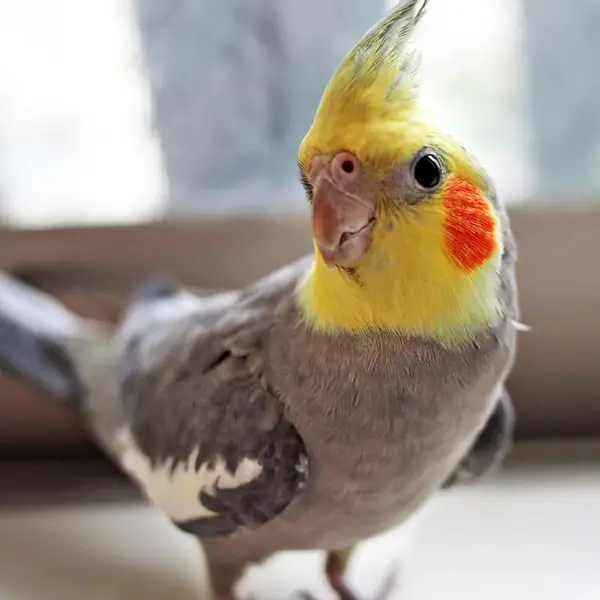
1. Nutrients Deficiencies
Lack of vital nutrients can result in a soft, discolored, and misshapen beak. Calcium and vitamin D are responsible for beak development in birds like cockatiels. A lack of amino acid methionine in the bird’s diet is known to lead to flaky beaks.
2. Injuries
Birds use their beaks for almost every activity they do, including climbing. As important as it is, it is more likely to be injured. If a bird falls, it might hurt its beak, which also happens if the bird attacks its image in a mirror. Sometimes birds are also caught up in their cage wires, which might injure their beaks
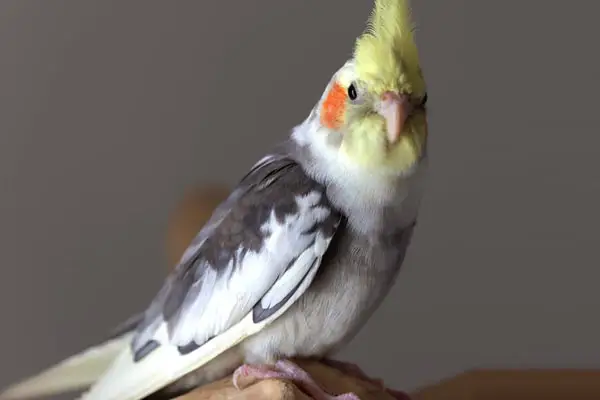
3. Infectious diseases
Most pet birds are likely to get psittacine feather and beak disease. The disease affects the parrot family, and birds suffering from it will sometimes grind their beak. Currently, there’s no known cure for PBFD, the reason why it’s one of the fatal diseases to pet birds.
4. Cancer
Like Humans, birds can suffer from cancer and even die if it’s not arrested early enough. For small birds like cockatiels, it’s harder for a person to realize the bird is suffering until it’s very late. Squamous cell carcinoma is a type of cancer birds develop and affects their beaks. To discern and treat cancer earlier, check for symptoms like beak discoloration, grinding, and erosion.
How Do You Help a Cockatiel Grinding Beak?
Since most times, beak grinding shows that your pet is relaxed and happy, there’s not much to do. You can keep the environment quiet and warm as it gets cozy and prepares to sleep. If you notice the bird is fluffing a lot, it might mean it feels cold, and you should adjust room temperatures to warm it.
However, since beak grinding can also be due to infectious diseases or cancer, take your cockatiel to an avian pet. If the professional veterinarian determines the bird has an infectious disease, it should take antibiotics. Cancer tumors on the bird’s beak are surgically removed if discovered early enough.
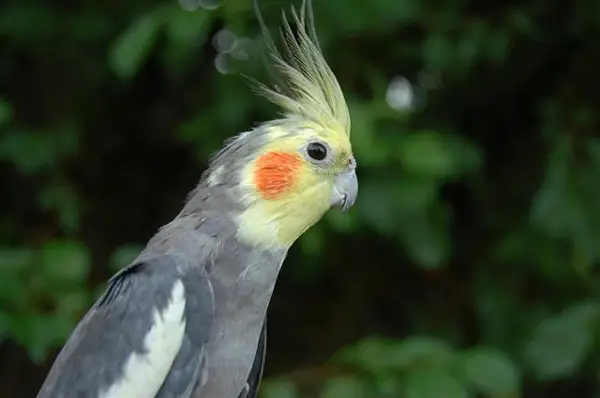
If, after check-up, your pet’s vet determines your bird is suffering from nutrition deficiency, improve its diet. For a healthy beak, your bird requires foods high in calcium and vitamins, which should be plenty until its condition improves. Your bird also requires direct sunlight to process vitamin D in its body, a vitamin they need for beak health.
Your pet bird’s cage should also be safe for it in the sense that it shouldn’t be getting stuck often. Also, the room should be free from mirrors, which birds tend to clash into and injure their beaks and other body parts. Some pet owners prefer clipping their birds’ wings, so they can’t fly into objects in the house and injure themselves.
Also read: Why Is My Cockatiel Eating So Much?
Is My Cockatiels Beak Healthy?
Though most times, beak grinding happens when the bird is happy and relaxing, some pet owners remain doubtful. To determine whether your bird is grinding its beak for relaxation or for health issues, you should know what a healthy beak looks like. Below are aspects that should help you to determine a normal cockatiel beak.
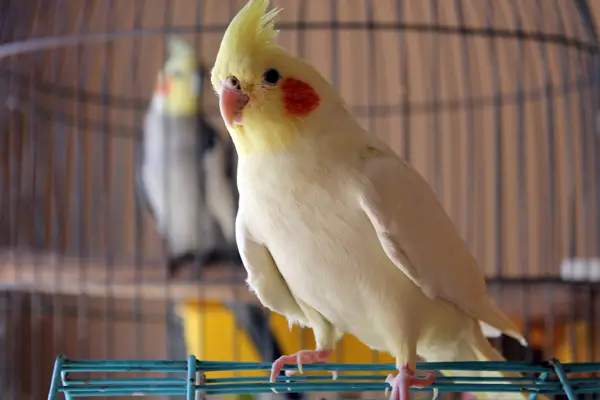
1. Alignment
A natural cockatiel beak is properly aligned as the upper beak tests on the lower. If the bird’s beak is not aligned, it’s possible disease is affecting it.
2. Smooth
A healthy cockatiels beak should be smooth with no peelings or other unusual textures. It should also have a symmetrical appearance, and its upper beak should be longer than the lower one.
3. Long enough
A cockatiel’s beak should not be too long or too short. Its upper beak should always be longer than the underlying lower beak. In the wild, the cockatiel’s beak is trimmed as the bird’s foliage, and since that doesn’t happen at home, it overgrows. To determine if the bird’s beak is long enough, confirm with your veterinarian, who should trim it if necessary.
4. Hard
A healthy bird’s beak is also hard and steady. This should be hard enough for the bird to climb using it and maintain a grip. Also, a cockatiel beak should be able to break nuts and other hard seeds they foliage and eat. A soft and rubbery feel to the bird’s beak is a sign your bird is unhealthy or lacking nutrients.
How To Trim a Cockatiel’s Beak?
Vets usually trim cockatiel beaks if a long beak is a reason behind constant grinding. Although cockatiels are known to trim their beaks when playing and pecking, this happens best in the wild. At home, they may be limited for a lack of ideal toys to play with. Their beaks may also overgrow due to dietary deficiencies.
Once you’re sure trimming will help, ask your avian vet to come over for an examination. They should rule out other issues and determine whether trimming will indeed help. A good vet knows how the beak should look, and so they know where to trim it. For this reason, you should never attempt to trim your cockatiel’s beak by yourself.
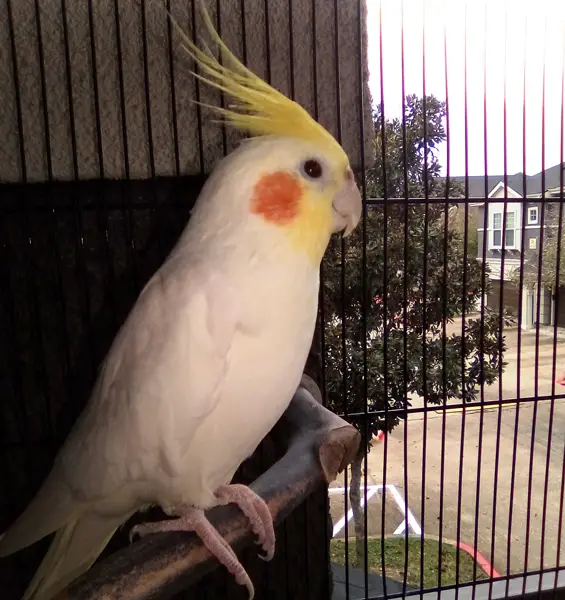
It is a process that requires a lot of care and attention. Below are the steps your vet should follow when trimming the beak.
- Wear gloves and hold the bird back
- Hold the bird firmly where in a position where they can access the beak easily
- Trim the beak cautiously until they see some white dots
- Level it up properly
Ensure you only allow an avian veterinary doctor to handle your cockatiel. You don’t want someone to go beyond the right place, leaving your bird in pain. They should also know how to level up the beak properly, or your bird will experience issues in the future. When done right, a trim could only be uncomfortable but not painful.
FAQ
Despite cockatiel’s beak grinding being natural and normal, most pet owners remain doubts. This also means a lot of questions are asked in their research as they strive to determine the real reasons. The following are some of the frequently asked questions, along with their answers.
Yes, cockatiels have nerves on their beaks, which makes them sensitive to touch. This also means your bird can feel your touch if you pet them on their beaks. The beak tips are very sensitive and can also bleed excessively if the bird is hurt.
Some owners assume that their birds grind their beaks to file them and keep them short. However, there is no research to support this claim, and it’s only a myth. Cockatiels’ teeth are filed down as they foliage for food and crack hard seeds.
Related: Why Is My Cockatiel’s Nose Red?
Outro
Cockatiel’s beak grinding behavior has many reasons. In most cases, the bird is soothing or calming itself while preparing to sleep. However, beak grinding can also mean the bird is suffering from a disease.
Common beak grinding diseases include cancer and Psittacine feather, and beak disease. The bird might also be suffering from nutritional deficiencies, and its diet should be improved and balanced. Take your pet to a professional veterinarian to determine and treat these diseases.
